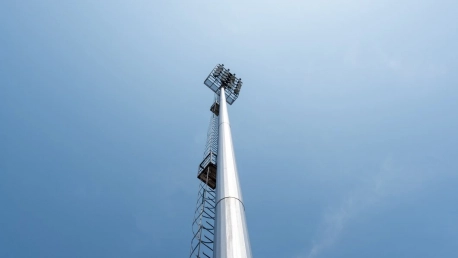The advent of digital communication has transformed the way we connect across the globe. As we approach 2031, the Telecom Towers market is poised to undergo exponential growth, powered by relentless technological innovation and an insatiable appetite for connectivity. This article peels back the layers of this evolving industry to uncover the trends, challenges, and opportunities that will shape its future.The transformative forces of increased data usage and a surge in subscriber base highlight the need for resilient and advanced telecom infrastructure. This necessity is driving the growth of the Telecom Towers market and is set to redefine wireless communication as we know it.
Unraveling the Market Dynamics
A closer look at the Telecom Towers market reveals a vibrant hub of activity where technology meets demand. The relentless pursuit of enhanced network coverage, coupled with an ever-expanding base of mobile users, has triggered massive growth in the telecom infrastructure sector. At the heart of this expansion are North America’s technological savvies and Asia-Pacific’s booming economies, with giants like China and India fueling the race forward. Europe and other regions contribute to a complex tapestry of global connectivity, each with its unique market drivers and strategic focus.As technological boundaries push forward, so does the need for innovative strategies among key players. The industry giants are not merely expanding their infrastructures but also forging partnerships and exploring mergers that promise to bolster their positions in the global marketplace. Observers note a competitive tension that encourages constant innovation, ultimately benefiting consumers with better and more reliable network services.
Technological Innovations
In the realm of telecom, technological evolution is inevitable and incessant. This holds especially true for the Telecom Towers market, where the integration of renewable energy stands out as a testament to the industry’s commitment to sustainability. Advanced tower designs are beginning to shape the landscape, promising to minimize environmental impact while maximizing efficiency and connectivity. These innovative strides aim not just to keep pace with the growing demand for data but to do so responsibly, with an eye toward the future.This pivot toward renewable energy sources and the development of eco-friendly infrastructure is not solely an act of environmental stewardship but also a strategic play. By investing in sustainable technologies, companies are insulating themselves against the volatility of non-renewable energy prices while ensuring they’re geared up for the long haul. As environmental regulations tighten and public expectations lean toward green solutions, telecom providers are positioned to lead the way with innovative solutions.
Market Segmentation and Analysis
To fully grasp the dynamics of the Telecom Towers market, one must dive into its segments: fuel type, tower design, installation practices, and ownership models. Each category carries specific characteristics, challenges, and opportunities for growth. For instance, the diversity of tower types—from monopoles to stealth towers—reflects the need for adaptability in various environments and aesthetic considerations. Installation practices are influenced by location constraints and regulatory policies, while ownership models inform the strategic and financial frameworks within which market players operate.Assimilating the nuanced segmentation of this market can be the key to unlocking its potential, helping stakeholders to tailor their strategies and identify where demand is most likely to surge. The shifting sands of the telecom landscape favor the prepared, and detailed knowledge of these segments enables companies to anticipate and adapt to the evolving demands of consumers and technology alike.
Competitive Landscape
The competitive dynamics within the Telecom Towers landscape are as rugged as they are exciting. Powerhouses like Telstra, AT&T Inc., Indus Towers Ltd., and SK Telecom dominate the conversation, but they are not alone. The terrain is crowded with ambitious competitors, each vying to carve out their space, enhance their services, and innovate ahead of the next curve. Strategic partnerships add to the complexity of the battlefield, as alliances are forged with the intent to leverage synergies and accelerate growth.Understanding this competition is key to discerning how the industry might evolve. It’s not merely a matter of who can build the most towers, but who can redefine and lead the market through pioneering strategies and breakthroughs. The dance of competition drives progress, creating an environment that rewards agility, foresight, and the ever-crucial ability to innovate.
Regional Growth and Opportunities
While the global marketplace is interconnected, regional disparities in the Telecom Towers market reflect growth patterns and untapped opportunities that differ markedly from one territory to the next. North America, for instance, maintains a market edge borne out of its technological maturity and robust infrastructure. Conversely, the Asia-Pacific region is marked by a burgeoning potential, with urban expansion and digital uptake providing fertile ground for telecom development.A deeper examination of the regional characteristics reveals socio-economic nuances that are vital for the customization of market strategies. These regional narratives contribute to the crafting of nuanced approaches suited for each market’s distinctive needs and aspirations. Businesses leveraging this regional understanding will likely find themselves at an advantage, well-positioned to tap into the growth opportunities unique to each landscape.
The Road to 2031: Predictions and Prospects
The digital era has drastically reshaped global communication networks. Looking ahead to 2031, the Telecom Towers sector is on the brink of an impressive expansion, fueled by continuous tech advancements and a growing demand for uninterrupted connectivity.Crucial dynamics such as burgeoning data consumption and an expanding number of users underscore the critical need for robust, cutting-edge telecom frameworks. These factors are the engines propelling the Telecom Towers industry forward, catalyzing a reimagining of mobile communication.As we barrel towards a new epoch of digital interconnectivity, the Telecom Towers market is emerging as a fundamental pillar. With society’s voracious hunger for seamless communication, infrastructure enhancement is not just anticipated—it’s imperative. The future of wireless connectivity hinges on the ability of the market to adapt and innovate, ensuring that the growing user demands are met with equivalent, if not superior, infrastructure capabilities. This impending growth spurt in telecom infrastructure is not just a possibility; it’s an inevitability that will revolutionize wireless communication for the next generation and beyond.









